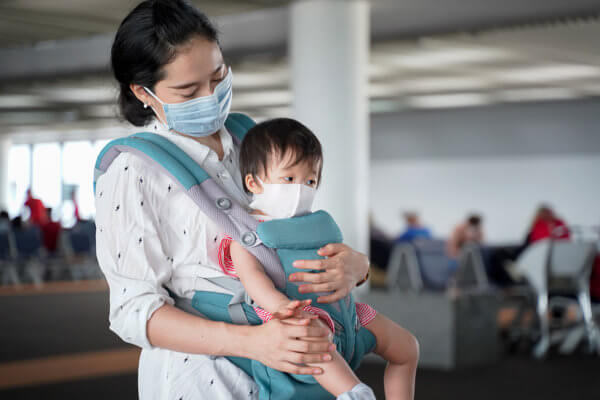A happy baby is a healthy baby, so be sure to stock these fundamentals in your medicine cabinet and first aid kit. Be sure to include any other items that are specific to your child’s needs and check the expiration dates on perishable items routinely, replacing them as they expire. Unless otherwise noted, these items are readily available at most drugstores.
Baby’s Medicine Cabinet Checklist
- Thermometer Although high-tech ear thermometers may be less intrusive when your baby is young, a good old-fashioned rectal reading provides the most accurate result. Good news: Today they’re no longer the dangerous glass-and-mercury kind. A wide variety of inexpensive ($5 to $20) digital rectal thermometers are available and take temperatures quickly—in as fast as five seconds.
- Humidifier When your baby has a cough, croup (a cough that sounds like a barking seal) or a cold, adding moisture to the air with a humidifier in his room may help. Look for the cool-mist type (free of a heating element, they’re considered safer for households with tots) at a local mass-retail store. Be sure to follow the manufacturer’s directions and clean it regularly; dirty humidifiers can breed bacteria and mold that can cause illness. Ideal home humidity levels are between 30 and 50 percent; you can measure it with a hygrometer (available at hardware stores) or choose a humidifier with a built-in humidistat.
- Nasal aspirator To give your baby some relief from a stuffy nose, use an aspirator to suck out mucus and solid matter, which will help her breathe easier. The bulb syringe is probably the most widely used type, but battery-operated versions, such as the one from Unimed, are a new alternative.
- Medicine dispenser A clearly marked liquid medicine dispenser can help alleviate potentially risky dosing mistakes. A pacifier-style, such as the one from Munchkin, helps bypass babies’ taste buds to reduce the chance of gagging.
- Gauze pads Gauze wraps are the perfect material for cleaning minor scrapes, cuts and burns, and for dressing them once they’ve been treated. The lightly woven fabric absorbs liquids and is breathable, allowing airflow. Gauze pads are ideal for small wounds and come individually wrapped to ensure sterility.
- Bacitracin ointment After cleaning your infant’s minor scrapes and cuts with a gentle/hypoallergenic soap and water, help prevent infection with a bacitracin first-aid antibiotic ointment (avoid first-aid ointments that contain neomycin, which can cause skin sensitivity). Apply according to manufacturer’s directions.
- Adhesive bandages Keep various sizes of this type of bandage on hand for when your child has bleeding or a minor open wound. Be sure to remove the bandage at least once a day to check on healing progress, or whenever the bandage gets wet. Once a scab has formed, remove the bandage.
- Cold packs Applying cold, not heat, to minor bumps is the best option to minimize swelling. A cold pack makes it a no-brainer: Just keep a couple in the freezer and use when necessary. The gel inside the hypoallergenic pack stays cold for about 30 minutes. A cold pack is also great for relief after shots and on insect bites.
- Electrolyte solution These helpful liquids contain a blend of water, sugar, salt and electrolytes to keep babies and toddlers hydrated when they suffer from diarrhea and/or vomiting.
- KidsDoc Symptom Checker App Put your iPhone or Android to good use and download the KidsDoc Symptom Checker App from the American Academy of Pediatrics. When your child exhibits symptoms, you’ll be able to find them quickly and consult the decision chart to take action. Searches can be done alphabetically, by body area or keyword. You’ll also find dosage information by weight for common OTC medications and first aid illustrations.
A happy baby is a healthy baby, so be sure to stock these fundamentals in your medicine chest and first aid kit.




